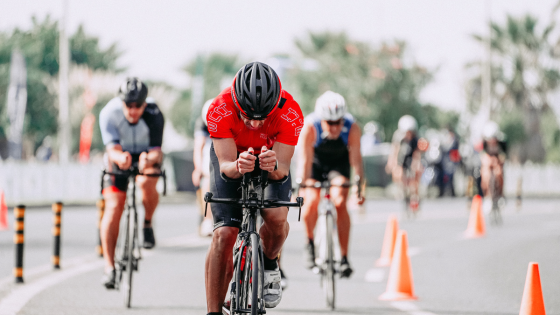Triathlons are exhilarating events that test both physical prowess and mental fortitude. As athletes gear up for the race, it’s crucial to understand that etiquette isn’t just about following rules; it’s about creating an inclusive and safe environment for everyone involved. Here are some best practices to keep in mind while navigating the course on race day.
- Respect the Space: Whether you’re swimming, cycling, or running, respecting the space of fellow athletes is paramount. During the swim leg, avoid aggressive behaviors like pushing or pulling; instead, maintain a reasonable distance and swim parallel to others to prevent collisions. In the transition area, be mindful of your equipment placement, ensuring it doesn’t encroach on someone else’s area.
- Communication is Key: Effective communication can prevent misunderstandings and accidents. Use verbal cues or hand signals to indicate your intentions—whether you’re passing, slowing down, or turning. Being clear and concise with your communication helps create a safer environment for everyone involved.
- Drafting and Passing: In the cycling leg, drafting rules vary among different triathlon events. Regardless, maintaining a safe distance between bikes is crucial. If drafting is permitted, be considerate when passing. Signal your approach, pass swiftly, and give ample space before merging back in. This not only prevents accidents but also shows respect for your fellow competitors.
- Aid Stations and Littering: Aid stations provide much-needed hydration and nutrition. Approach these stations without abruptly cutting off other athletes. Grab what you need efficiently, making sure not to impede others. Additionally, disposing of trash properly is essential—never litter on the course. Discarding items in designated areas helps maintain the racecourse’s cleanliness and safety.
- Spectator Interaction: Spectators play a vital role in boosting morale, but their presence can sometimes interfere with the flow of the race. While their enthusiasm is appreciated, be mindful of their impact on the course. Avoid stopping abruptly for photos or high-fives, especially in congested areas. Stay focused on the race while acknowledging and appreciating their support.
- Respect Race Officials and Volunteers: Race officials and volunteers dedicate their time to ensure the event runs smoothly. Respect their instructions and guidance. If an official provides direction or offers assistance, follow their guidance promptly and respectfully. Their presence is integral to maintaining order and safety throughout the race.
- Finish Line Courtesy: As you approach the finish line, celebrate your accomplishment, but be mindful of other finishers. Avoid blocking the finish chute or lingering excessively after crossing the line. This allows for a smooth flow of finishers and prevents congestion at the end of the race.
In essence, practicing good etiquette during a triathlon is about fostering a sense of community and safety among participants. By respecting others, communicating effectively, and being considerate of the environment, athletes can contribute to a positive and enjoyable race experience for everyone involved. Ultimately, embodying these principles enriches the essence of the sport and leaves a lasting, positive impression on the triathlon community.
